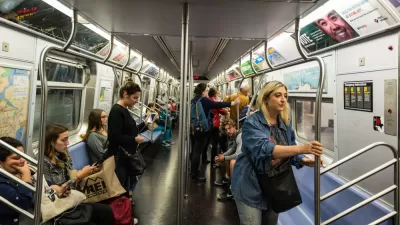The admission is the first from a Chinese official that puts a human cost on the country's huge air pollution problem, largely stemming from coal-burning power plants. But Shanghai had good news this week too. Rain brought blue skies and clean air.
In introducing this [downloadable] Marketplace radio report, Kai Ryssdal states this stunning revelation from China's former health minister: "Half a million people die each year in China because of air pollution." New coal plant emissions targets have been set, "but how will they meet them?", he asks.
"After a month of some of the worst smog on record, it rained in Shanghai this week, making today one of the cleanest-air days this winter," states Rob Schmitz, Marketplace’s China correspondent based in Shanghai.
(China’s government) aims to reduce pollution from coal-fired power plants around Beijing and Shanghai by up to 25 percent within the next three years. Job promotions for local officials will reportedly be dependent on whether these goals are met.
Malcom Moore of The Daily Telegraph writes in The Province on Jan. 8 that the former health minister, Chen Zhu, "is the most senior government official to put a human cost on the smog that regularly clouds Chinese skies. Until recently, any mention of deaths relating to pollution was strictly censored."
Schmitz ends his report with the disheartening news that "the government announced this week that China produced a hundred million tons of coal this past year – six times more than the previous year, ensuring that China continues to burn more coal than the rest of the world combined."
Earlier, we noted that "China will account for nearly 60% of new global (coal) demand over the next five years" which in turn helps to explain why "growing coal consumption (has) caused 60 percent of the increase in global carbon dioxide emissions since 2000."
FULL STORY: China rolls out plan to clean its air - will it work?

Study: Maui’s Plan to Convert Vacation Rentals to Long-Term Housing Could Cause Nearly $1 Billion Economic Loss
The plan would reduce visitor accommodation by 25,% resulting in 1,900 jobs lost.

North Texas Transit Leaders Tout Benefits of TOD for Growing Region
At a summit focused on transit-oriented development, policymakers discussed how North Texas’ expanded light rail system can serve as a tool for economic growth.

Why Should We Subsidize Public Transportation?
Many public transit agencies face financial stress due to rising costs, declining fare revenue, and declining subsidies. Transit advocates must provide a strong business case for increasing public transit funding.

How to Make US Trains Faster
Changes to boarding platforms and a switch to electric trains could improve U.S. passenger rail service without the added cost of high-speed rail.

Columbia’s Revitalized ‘Loop’ Is a Hub for Local Entrepreneurs
A focus on small businesses is helping a commercial corridor in Columbia, Missouri thrive.

Invasive Insect Threatens Minnesota’s Ash Forests
The Emerald Ash Borer is a rapidly spreading invasive pest threatening Minnesota’s ash trees, and homeowners are encouraged to plant diverse replacement species, avoid moving ash firewood, and monitor for signs of infestation.
Urban Design for Planners 1: Software Tools
This six-course series explores essential urban design concepts using open source software and equips planners with the tools they need to participate fully in the urban design process.
Planning for Universal Design
Learn the tools for implementing Universal Design in planning regulations.
City of Santa Clarita
Ascent Environmental
Institute for Housing and Urban Development Studies (IHS)
City of Grandview
Harvard GSD Executive Education
Toledo-Lucas County Plan Commissions
Salt Lake City
NYU Wagner Graduate School of Public Service



























